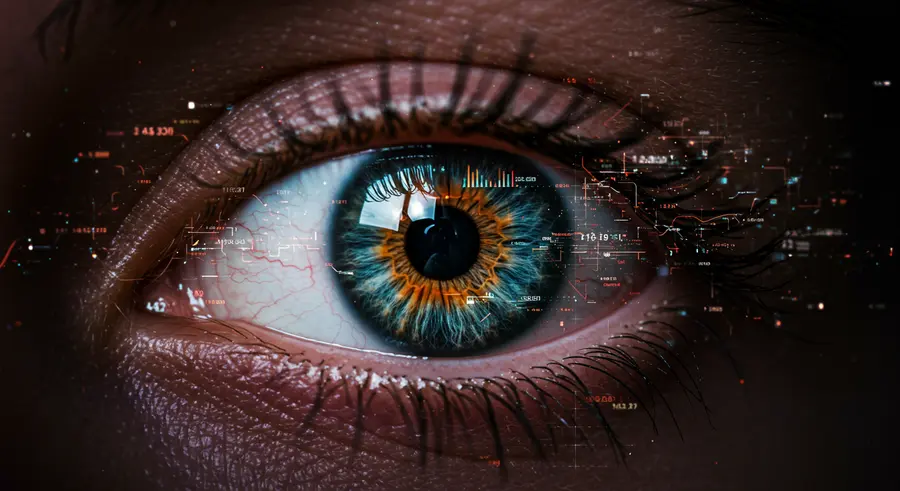Appearance

Welcome, tech innovators and curious minds! 👋 Today, we're taking a deep dive into one of the most exciting and rapidly evolving fields in artificial intelligence: Computer Vision. Imagine a world where machines don't just process data, but truly "see" and interpret the visual world around them, much like humans do. That's the magic of computer vision, and its impact on our daily lives is becoming increasingly profound.
From unlocking your smartphone with a glance to powering self-driving cars, computer vision is no longer a futuristic concept but a present-day reality, constantly pushing the boundaries of what's possible. Let's explore its transformative power, key trends, and real-world applications that are shaping our future.
What is Computer Vision? 🧠
At its core, computer vision is a field of artificial intelligence that enables computers and systems to derive meaningful information from digital images, videos, and other visual inputs. It allows them to process, analyze, and understand the visual world, and then take actions or make recommendations based on that information. Think of it as teaching computers to "see" and "think" like us!
Key Trends Shaping the Future of Computer Vision 🚀
The landscape of computer vision is dynamic, with several exciting trends leading the charge:
Generative AI in Computer Vision: Beyond just understanding images, generative AI allows computers to create new, realistic images and videos. This is revolutionizing content creation, design, and even data augmentation for training other AI models. Imagine AI-generated realistic virtual environments for gaming or synthesized data to improve medical imaging diagnosis!
Merged Reality (MR): This trend is blurring the lines between the physical and digital worlds. Computer vision makes it possible for virtual objects to seamlessly blend with real environments. This is enhancing experiences in gaming, education, interactive advertising, and sophisticated training simulations.
Edge AI and On-Device Processing: Running complex computer vision models directly on devices (like smartphones, drones, or smart cameras) rather than in the cloud is becoming crucial. This enables real-time processing, reduces latency, enhances privacy, and allows for applications in remote or disconnected environments. Think of smart surveillance systems that can detect anomalies instantly without sending data to a central server.
3D Vision and Reconstruction: Moving beyond 2D images, computer vision is increasingly capable of understanding and reconstructing objects and environments in three dimensions. This has massive implications for robotics, augmented reality, autonomous navigation, and even creating digital twins of physical spaces.
Explainable AI (XAI) in Computer Vision: As computer vision systems become more complex and deployed in critical applications (like healthcare or autonomous vehicles), understanding why a model made a certain decision is paramount. XAI aims to make these AI models more transparent and interpretable, building trust and enabling debugging.
Real-World Applications: Where Vision Meets Reality 🌐
Computer vision is already integrated into countless aspects of our lives, and its applications are only expanding. Here are some compelling examples:
Healthcare 🏥:
- Disease Diagnosis: Analyzing medical images (X-rays, MRIs, CT scans) to detect diseases like cancer, tumors, or retinal conditions early and with high accuracy.
- Surgical Assistance: Guiding surgeons during complex procedures, providing real-time information, and even enabling robotic surgery.
- Patient Monitoring: Tracking patient movements, vital signs, and anomalies in hospitals to prevent falls or alert staff to critical changes.
Autonomous Vehicles & Transportation 🚗:
- Object Detection & Tracking: Identifying pedestrians, other vehicles, traffic signs, and obstacles in real-time to enable self-driving capabilities.
- Lane Keeping & Navigation: Understanding road markings and environmental cues to keep vehicles in lane and navigate complex routes.
- Traffic Monitoring: Optimizing traffic flow, detecting incidents, and improving public safety.
Manufacturing & Quality Control 🏭:
- Automated Inspection: Detecting defects in products on assembly lines with superhuman precision and speed.
- Robotics & Automation: Guiding robots for picking, packing, and precision assembly tasks.
- Predictive Maintenance: Analyzing visual data from machinery to predict failures before they occur.
Agriculture 🚜:
- Crop Monitoring: Identifying plant diseases, nutrient deficiencies, and pest infestations from drone imagery.
- Automated Harvesting: Guiding robotic harvesters to selectively pick ripe produce.
- Livestock Monitoring: Tracking animal health and behavior for optimal farming.
Retail & Security 🛍️:
- Inventory Management: Automatically tracking stock levels and product placement in stores.
- Customer Behavior Analysis: Understanding shopping patterns and optimizing store layouts.
- Security & Surveillance: Facial recognition for access control, anomaly detection, and public safety.
Sports Analytics 🏅:
- Player Tracking: Analyzing player movements, speed, and strategies in real-time.
- Automated Officiating: Assisting referees in making accurate calls in various sports.
- Performance Enhancement: Providing detailed insights for athletes and coaches to improve training.
For more examples and deeper insights into how computer vision is transforming various sectors, you can explore our catalogue page: Real-World Computer Vision Examples.
The Road Ahead 🛣️
Computer vision is set to redefine our future, offering unprecedented opportunities for innovation across every industry. As models become more sophisticated, efficient, and accessible, we can expect to see even more intelligent applications emerge. The convergence of computer vision with other AI fields like natural language processing and robotics will unlock truly intelligent systems capable of perceiving, understanding, and interacting with the world in incredibly human-like ways.
Stay curious, stay innovative, and keep your eyes peeled – the future of sight is here! ✨